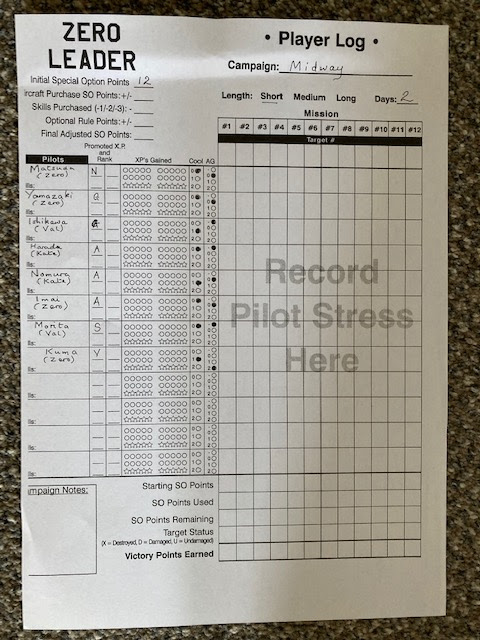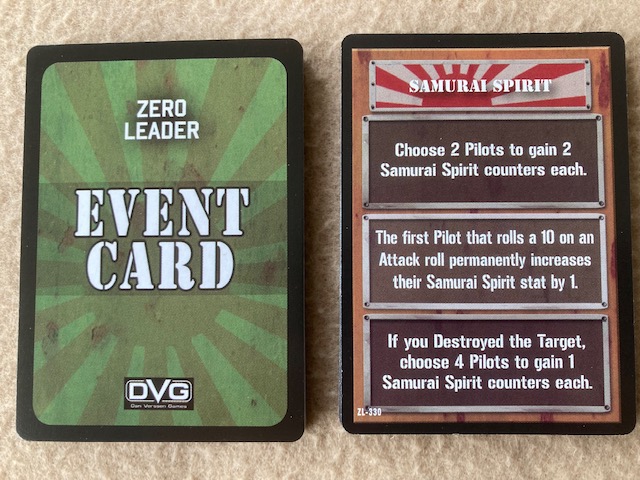STUKA LEADER FROM DVG After the amazing package of the latest Warfighter WWII boxed games and the huge stack of expansion decks that I re...

For your Wargamer, Toy soldier collector, MiniFig collector, military history nut. Reviews, interviews, Model Making, AARs and books!
STUKA LEADER
Atlantic Chase The Kriegsmarine Against the Home Fleet 1939-1942 Intercept Volume One by GMT Games The box cover, I believe, shows the Bis...

For your Wargamer, Toy soldier collector, MiniFig collector, military history nut. Reviews, interviews, Model Making, AARs and books!
Atlantic Chase: The Kriegsmarine Against the Home Fleet 1939-1942 by GMT Games
Atlantic Chase
The Kriegsmarine Against the Home Fleet 1939-1942
Intercept Volume One
by
GMT Games
 |
| The mounted map |
 |
| Some scenarios and setups |
After the list above, I should just post this and say "Goodnight Gracie".
 |
| A game in progress |
 |
| Game situation |
Terminator: Dark Fate - Defiance by Slitherine This is a demo of Slitherine's new real time strategy game based in the Terminator un...

For your Wargamer, Toy soldier collector, MiniFig collector, military history nut. Reviews, interviews, Model Making, AARs and books!
Terminator: Dark Fate - Defiance by Slitherine
Terminator: Dark Fate - Defiance
by
Slitherine
This is a demo of Slitherine's new real time strategy game based in the Terminator universe. I will state this right up front, I am not a big fan of RTS games. They are usually way too frenetic in pace. I have always liked turn based strategy games with their slower pace and with the ability to think about what you are doing each turn. That being said, it is good to get out of your safe space in games every once in a while.
 |
| Screenshot from the first mission |
This is what Slitherine has to say about the demo:
"The Terminator: Dark Fate – Defiance Demo will give you an insight into the campaign and skirmish modes in the final game. The demo will be published on October 9th as part of the Steam Next Fest, and will be available to everyone for a limited amount of time.
The Steam Next demo includes the first 3 single player campaign missions, and includes 1 Skirmish Map. This preview demo is identical, except it doesn’t have the skirmish map yet.
The early campaign missions will teach you the basics of the game but doesn’t include the multi-choice RPG aspects seen in later missions, where players can choose which factions to ally with (or attack), which objectives to follow or ignore, and how to respond to other characters through multi-response conversations.
These early missions also don’t include the army management screen. Here, you can upgrade skills, weapons and armor for your squads and vehicles. It’s possible to buy and sell manpower, vehicles, equipment, weapons and ammo at bases and trading zones, place troops into vehicles, and edit and rename your unit names. Your army is taken from mission to mission, so if you lose a unit in a mission, then it’s gone! But if you upgrade a squad, they’re ready for the next mission.
The Skirmish Mode in the demo includes an Assault Mode map. This Mode allows only the Founders or Legion to be selected and includes Assault Mode gameplay, with objectives to either attack or defend points on the map.
The release will also include Domination Mode maps that allow Founders, Legion or Movement forces to be selected, with different reinforcement rules.
All skirmish maps will also be available in Multiplayer, which isn’t provided in this initial preview. Multiplayer will allow up to 4 players to play within a map, in 1v1, 2v1, 2v2 modes."
Terminator: Dark Fate – Defiance will be available on PC later this Fall.
 |
| Screenshot from the second mission |
I can tell you three things about the demo that I really like. The first is that the game is really nice looking you can almost say beautiful to behold. The second is that you are given a few different orders to give to your small soldiers and vehicles. The third is something you do not usually see in a RTS at least when they are first released, and that is a pause button. I have played more than a few RTS games where the pause button was added in an update or is a mod made by a player.
.jpg) |
| This is a screenshot from the third mission |
Another thing I like is that you are really given a storyline to follow. In the demo you are a Policeman who has decided to help both civilians and the army units. So, you become immersed in the game. Instead of just sprites, the characters in the game actually mean something to you. Before the second mission begins you find out that it is ten years later, and you are now a Major in the Founders. This would be the remnants of the civilians and army that have coalesced after the rise of the machines. The machine army is called the Legion.
.jpg) |
| Another pic from the third mission |
I was quite pleasantly surprised by the demo and the gameplay, especially the pause button. For a demo of a game it was very immersive and really left me wanting more to play.
.jpg) |
| Another screenshot from the third mission |
The game will come with the ability to play either side, at least in skirmish mode, and that is another point on the plus side. The only thing about the demo I did not like was the inability to zoom out much at all. You can zoom in to see separate soldiers. However, there is an inset map that even if the zoom is not increased can be used to keep an eye on your units and the enemy. Thank you Slitherine for letting me take this demo for a ride.
Robert
Terminator: Dark Fate - Defiance
1212 Las Navas de Tolosa by Draco Ideas The year is 1212 and El Cid has been dead for thirteen years. The deadly conflict between the Musli...

For your Wargamer, Toy soldier collector, MiniFig collector, military history nut. Reviews, interviews, Model Making, AARs and books!
1212 Las Navas de Tolosa by Draco Ideas
1212 Las Navas de Tolosa
by
Draco Ideas
The year is 1212 and El Cid has been dead for thirteen years. The deadly conflict between the Muslims and Christians for Spain is still going on. In fact, the Reconquista will continue for almost three hundred years. The tide had turned and the Muslims, commanded by their Caliph Muhammad al-Nasir, were taking a good number of Spanish fortresses. It had gotten so bad that the pope, Innocent III, had called for a crusade in Spain. I am simplifying the historical tale. Both the Christians and Muslims were a loose group of smaller states that fought each other as often as they fought against their supposed enemies. The crusaders and a number of Christian states banded together to fight against a similarly made-up army under the Caliph. This is the backdrop behind the Battle of Las Navas de Tolosa.
This is an excerpt from a written account of the time:
"They attacked, fighting against one another, hand-to-hand, with lances, swords, and battle-axes; there was no room for archers. The Christians pressed on." – (The Latin Chronicle of The Kings of Castile)
This is what comes with the game:
Board
54 Unit Markers
9 Combat Cards
6 help cards
12 special cards (6 from each side)
HALLS OF HEGRA FROM TOMPET GAMES When my gaming friends and I first heard of this title, the general consensus was that it must be a game i...

For your Wargamer, Toy soldier collector, MiniFig collector, military history nut. Reviews, interviews, Model Making, AARs and books!
HALLS OF HEGRA
HALLS OF HEGRA
TOMPET GAMES
Bloody Verrieres The I. SS-PanzerKorps' Defence of the Verrieres - Bourguebus Ridges Volume II by Arthur W. Gullachsen This is volu...

For your Wargamer, Toy soldier collector, MiniFig collector, military history nut. Reviews, interviews, Model Making, AARs and books!
Bloody Verrieres: The I. SS-PanzerKorps' Defence of the Verrieres - Bourguebus Ridges Volume II by Arthur W. Gullachsen
Bloody Verrieres
The I. SS-PanzerKorps' Defence of the Verrieres - Bourguebus Ridges Volume II
by
Arthur W. Gullachsen
This is volume II of a comprehensive look at the defense of the ridges during the Normandy Campaign. This book will have a tough time equaling its older brother. Volume I was full of history tidbits that I have not seen anywhere else and there are tons of books on this part of the Normandy Campaign.









































Follow Us